The Journeyman Project
The tradesmen of 21st century America.
A photo essay by Troy Paff.
14 February, 2011: Luciano Repetto: Graffeo Coffee Roasting Co.
San Francisco. Of my predilections, I suppose this is true: I am a coffee snob. While I am not proud of this admission, I too often find myself in nebbish conversations about the black stuff, and the qualities separating the good versus bad. Convenience versus craft, diner versus hotel, drip versus instant, espresso versus French press, black versus the über sweet concoctions rolling off the Starbucks assembly lines coast to coast. A dissertation on the minutiae would not be lost on me, or out of the question for this modest blog.
Besides evolving my craft as a home barista, over the years I’ve begun roasting my own coffee beans. Because I am a coffee snob, seeking out the best commercial roaster I can find perhaps makes less sense for TJP than it does for my own edification. This is why I’m paying a visit to Graffeo Coffee Roasters in San Francisco, more precisely in the old world neighborhood of North Beach aka Little Italy.
I discovered North Beach in the mid nineties, while visiting a friend in San Francisco. What began as a day of exploring the city proper by lunchtime had become a fixation on the burgh: Cafe Trieste and other sidewalk cafes, cozy old bars with slices of virtuous pizza, basement record stores hawking stacks of vintage stereo gear, the landmark City Lights Books. By evening we were a couple Irish coffees in and strolling the steep avenues to Coit Tower, puffing Nat Shermans and enjoying the nighttime view over the Bay.
A decade later, I find myself in North Beach on a somewhat regular basis. Being that a particular Dirty Jobs host lives in San Francisco, we are often shooting segments in and around the city. When we are, the crew takes up residence on Broadway, where Chinatown holds hands with North Beach in an eclectic union of culinary opportunity that we adore. In six years we’ve made some favorite haunts for noodles, pasta, tapas, beer, wine … And coffee.
It is only by coincidence that my favorite coffee roaster resides in this same neighborhood. Or should I say, it’s a coincidence that the DJ crew has taken up their particular residence in the same neighborhood as my favorite roaster. This happenstance has its origin in 2001, when close friend (and DJ cameraman) Doug Glover was putting together his wedding in the nearby Stinson Beach area. In his travels to and from, he followed up on a referral to Graffeo’s San Rafael location, where he procured some Dark Roast. Being the thoughtful gentleman he is, Doug brought some home to his best man in Los Angeles …
More than a decade later, I still recall the unfolding of that brown bag, and the token act of putting my nose inside for the ‘whiff’ of what would I figured would be some good stuff. But this was a special. There was a deep robustness here, yet no smokiness or acidity typical of “freshly roasted” beans. It was as if the oils were alive in the air without the sensation of assault. On the contrary, the subtle sweetness that lingered in the nostrils soothed in a way that contradicts a caffeine infusion. I am honest when I say I’ve yet to find this sensation with another roast.
At the time, my barista skills were virginal. I spent what I thought was a lot of money on a used DeLonghi Sorrento, a passive, entry level espresso machine with a steam wand for frothing milk. Despite chopping my beans to dust in a $20 nut grinder (a connoisseur’s no-no) , the Graffeo roast produced a tasty espresso and an Americano on par with a fine French press coffee. I would not improve upon this combo until I later upgraded my knowledge and equipment. But more on that in a future post.
As my snobbery has grown, Doug and I have continued to pick up fresh roast for each other when visits to the Bay area permit, with the locale in SF/North Beach usually more convenient than the San Rafael one. As my skill as a barista has advanced and my attention to refinement has evolved, I’ve held Graffeo as the gold standard of superlative beans, expertly roasted. To date, few roasters (Intelligentsia, Blue Bottle) have consistently offered this snob such inspired roasts, prompting the question: What is Graffeo’s secret?
* * * *
Luciano Repetto greets me on this rainy morning with skepticism. I am not surprised. I’d anticipated some difficulty based on our phone conversations three days prior (while driving across the Utah desert, asking questions about quality and technique in an attempt to garner a spot of credibility), where I was met with a surliness I couldn’t fathom. The man on the phone had seemed at once bothered by my inquiry, answering my questions with a shortness I figured was due to some slight. Ironically, Luciano had no intention of hanging up on me– at least not until he convinced me what makes coffee good. There was no mystery, he assured me, and it certainly wasn’t worthy of photographs. There’s one way to roast, and that’s the best way. Frustrated by my refusal to settle for that, I encouraged Luciano to take some time to think it over. After several hours thinking it over, apparently the notion of my visit seemed a good opportunity to set the record straight: to show what makes a superior roast. “And that will take half an hour,” he said. I’d like a full day, I countered. He snorted. “I’ll see you Wednesday.”
The small retail front of the establishment is well lit, with a vintage roaster and a strange theatre-prop-like display of a slanted table with large cappuccino cups in the window. The place smells of heaven (that is, if coffee is served beyond the pearly gates). Now that we’re face-to-face, Luciano leans on the counter and sizes me up. He’s a grandfatherly sort, dressed in a tasteful collared sweater. “So you want to see the process, huh? This’ll be quick.”
Already Luciano is heading through the adjoining room, where his shop manager is filling retail bags of fresh roast from a 50-gallon trash can of dark, oily beans, toward another room full of shiny machinery. I pause momentarily, long enough to drink in the aroma of all the beans and to ponder the surface area of fresh roast filling my nostrils.
By the time I catch up to Luciano, he’s pressing a button on the control panel of a massive stainless steel contraption, and it whirs to life with a rush of air and rattle of what I presume is coffee beans inside. He steps aside, and from what I can gather, we are witnessing the creation of another batch of product. After a couple of minutes, he opens a porthole so I can see the innards at work: airborne beans bathed in a warm orange glow, always in agitation to prevent burning against the steel walls of the roaster. The cacophony of the process has rendered communication impossible, but I do my best to follow along. Luciano points out a kiosk-like apparatus that is plotting lines onto a disk of paper. It looks like something Cal Tech would use to monitor earth movement, but what it’s really doing is tracking temperature change over time. This is vital to the process, as evidenced by the rapid cooling phase whereby the heat is cut and the chamber blasted with fresh air to stop the roasting as quickly as possible. A moment later, Luciano is emptying the beans from a hatch and into a trash barrel, filling the room with a blast of rich, roasted aroma. The machine goes quiet. He gestures to the bounty.
“No smoke,” he says. “Beans will continue to roast, and that makes control impossible … Unless you arrest the process.”
Though I don’t grasp the significance of this quite yet, I do understand that this is big information and I’d best pay attention. By the way, it is interesting that there is no smoke after such a violent, hot process.
Luciano has just left the room, pushing the can before him. I catch up.
“And that’s it,” he says.
“Okay, let me get my camera set up and we’ll do it again.”
He nods to the bagging operation still in process.
“That’s our light roast for the day, and this is our dark. We’re done roasting until tomorrow.”
Done? I laugh. It’s really all I can do.
“Luciano. I’m here to take pictures.”
The front bell rings, and Luciano returns to the retail desk to assist a customer. The shop manager, hard at work filling mail and website orders, offers me a knowing smile.
When Luciano returns, I’ve got my camera set up and I’m shooting the beans, the glorious beans.
He resumes. “So that’s really all there is to it. I told you it wasn’t anything photogenic.”
“I’ll come back tomorrow if I have to, but I need shots of you operating that machine. And I need to understand it and what makes it so special.”
The shop manager is grinning. Luciano caves. “Okay, okay,” he says.
* * * *
We’re back in the roast room. Satisfied that I do, in fact, care about this process, Luciano has shifted gears. He has slowed down, resigned to an obligation that we now share. We begin by doing a second round of dark roast, preceded by a dry run without power or heat.
Luciano’s baby, aka the Grand Apparatus, is a fluid bed roaster of 15 years age, one of a handful of such machines in existence, designed and built to spec by coffee roasting luminary Mike Sivetz of Corvalis, Oregon. Mr. Sivetz is a retired chemical engineer and “the world’s leading authority on coffee roasting.” Even in his 80′s, Mr. Sivetz continues to experiment and refine the principles he and Luciano hold as vital to proper roasting: Complete temperature control of the bean, right up to the ‘set point’ (or target temperature) of the roast; an effective arrest of the roasting process, followed by immediate cooling; and, inclusive to the preceding steps, continuous ventilation throughout the process.
A roast in its essential form should not be smoky. (At the risk of compromising your coffee cred, don’t tell Luciano you like a smoky roast.) Besides a smoky environment, killers of quality include less-than-spotless equipment and inaccurate gauges for monitoring and controlling temperature.
Throughout this rather matter-of-fact dissertation, I find myself relating to the objectives of Luciano’s time-proven process with my own attempts at home roasting (with a rotisserie nut roaster, made in China and modified by my DIY friend Jerry to accept coffee beans). I ask some pretty naïve questions, which Luciano endures: How do you know when a roast is done? (A: When the bean reaches uniform color throughout); What temperature is best to roast at? (A: Graffeo’s Light Roast is a 13-minute process to a 434-degree set point; the Dark Roast is a 14-minute process to a 464-degree set point; the non-chemical Swiss Water Decaf varies by batch due to fluctuations in moisture retention, as monitored by weight and appearance); Is the grind more–or is it less–important than the roast? (A: The roast is everything. And freshness has no substitute.)
As I become acquainted with Luciano and his ethic, I realize that his pointed answers are less a result of surliness and due more to what I’m growing to appreciate in every professional I meet who is at the top of their game: unadorned conviction. Patience is a virtue that becomes less useful to the practiced; expediency is golden. For artisans like Luciano, my presence represents a distraction that, until I prove myself worthy of higher wisdom, is mere nuisance.
Over a ‘worthy Graffeo espresso’ across the street at Mario’s Bohemian, we discuss origins. Born in Naples, Italy in 1944, Luciano was raised in the northern seaside town of Liguria, Portofino. An only child, he immigrated to the US with his father, Giovanni, post war. After working at a pasta factory for several years, Giovanni took his knowledge of coffee roasting (handed down by his own father, a merchant marine who roasted beans at sea) and in 1954 bought the roasting company in North Beach, an establishment originally opened by Giovanni Graffeo in 1935. In 1978, Luciano took over operations. Since that time, Graffeo Coffee Roasting has thrived on repeat customers, some with loyalties dating back four decades. Luciano knows he’s doing something right, yet he doesn’t get caught up in wild aspirations. Now roasting in two locations (San Rafael and San Francisco) with website customers around the world, Luciano has the flexibility to consolidate. In 2010 he closed a Beverly Hills retail space: “My manager was retiring anyway; it was easier to close the shop than to replace him.”
Even at the age of 66, Luciano has no plans for his own retirement. “I don’t know what I’d do with my time.” Especially where refinement takes time, and time is a commodity not to be squandered. Upgrades are key, in both tech and know-how. Walking back into the shop, Luciano pauses at the old roaster in the window.
“If you live in the past, you have no future,” Luciano says. “When the set point is everything, a roaster like this is a dinosaur. You must have control and consistency.”
“Otherwise you may as well use a nut roaster in your kitchen,” I say.
“You have no control, but you have a hobby,” he says. “And if it works for you, and you like you’re coffee, then that’s enough.”
“But I want control and consistency,” I say. “That’s the only way I can improve my roast.”
Luciano laughs.
“Pay a visit to Mike Sivetz,” he says. “He’ll design you a roaster. Take your checkbook.”
* * * *
Anything done well is an art, but coffee roasting is first a science served by technology. –Luciano Repetto
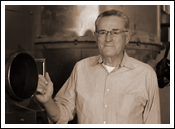
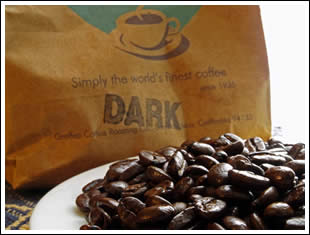


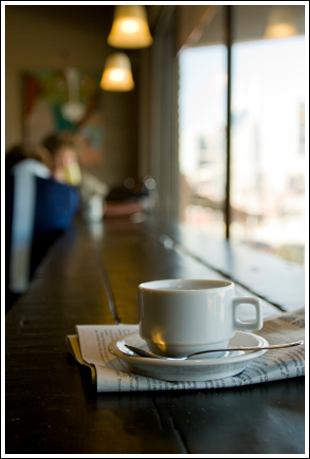
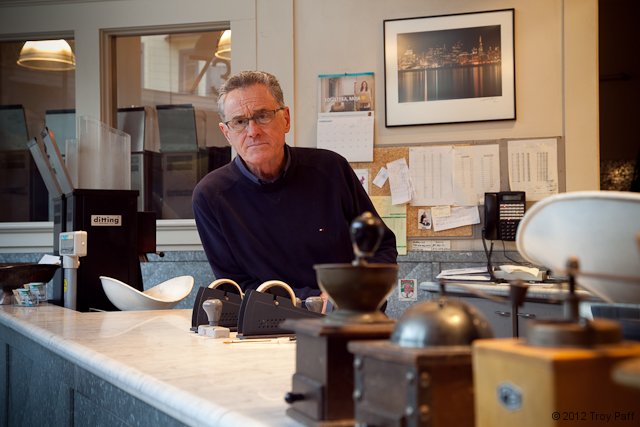



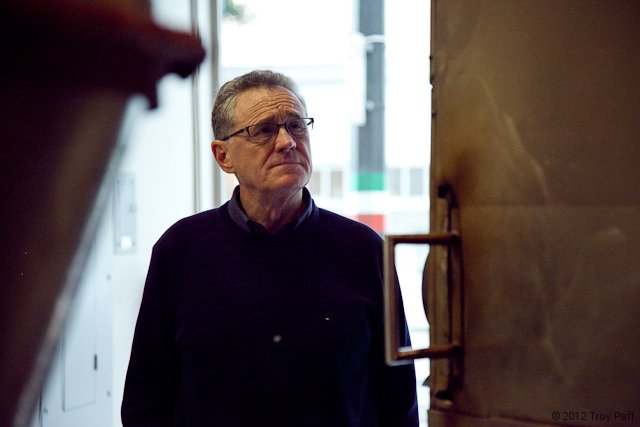

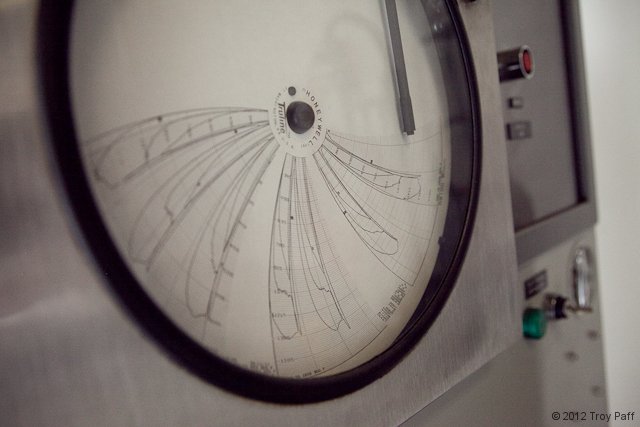

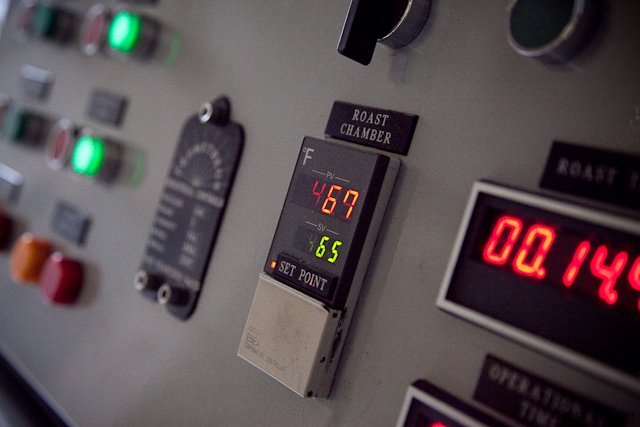

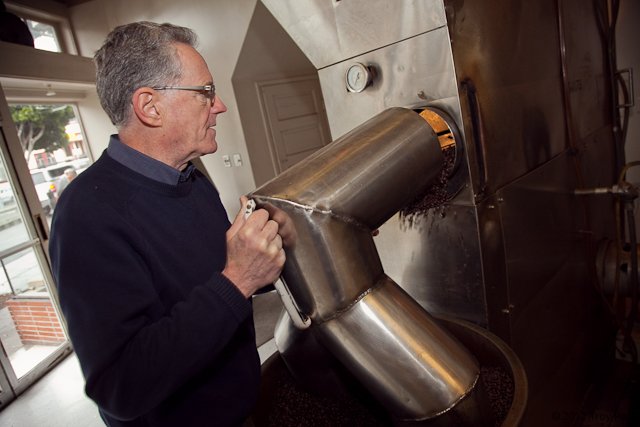

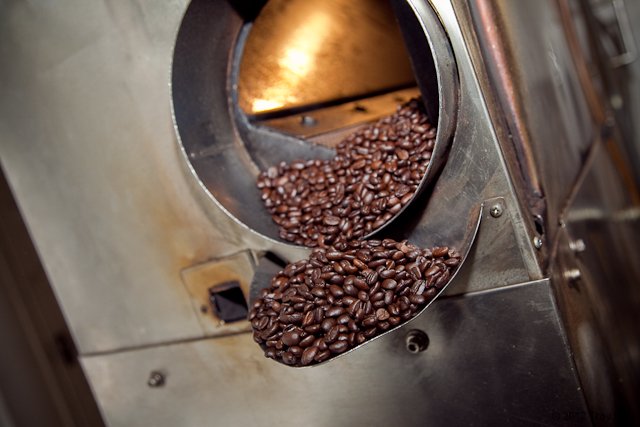

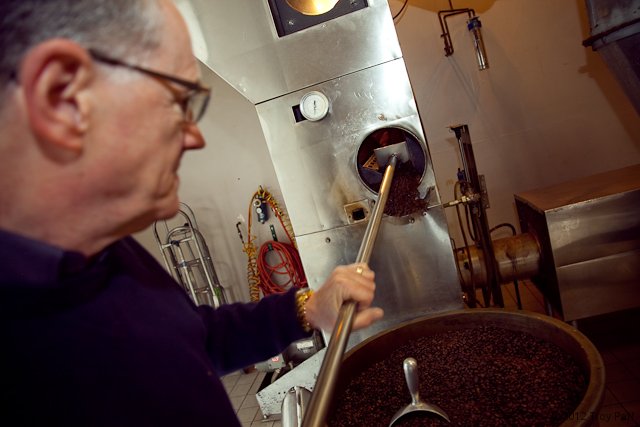

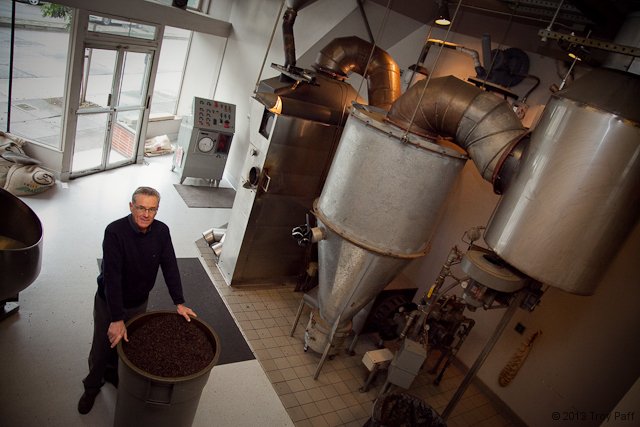

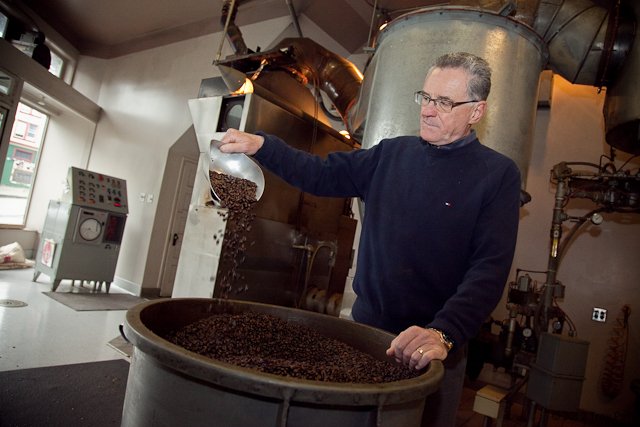

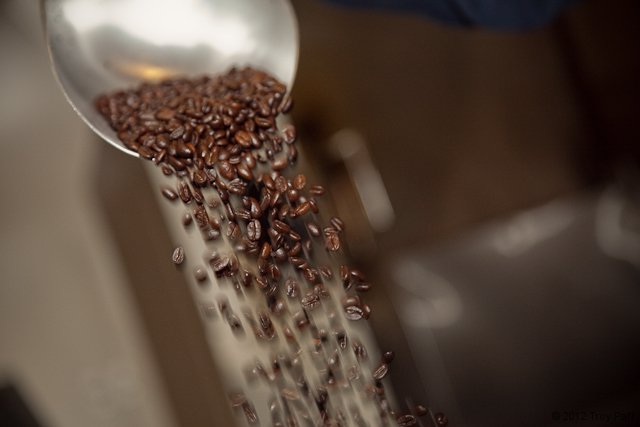

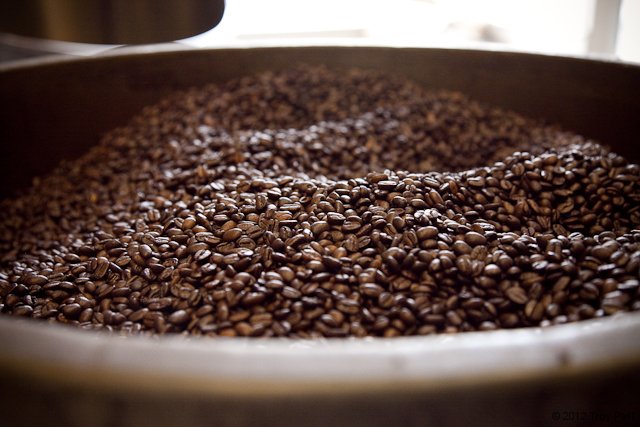

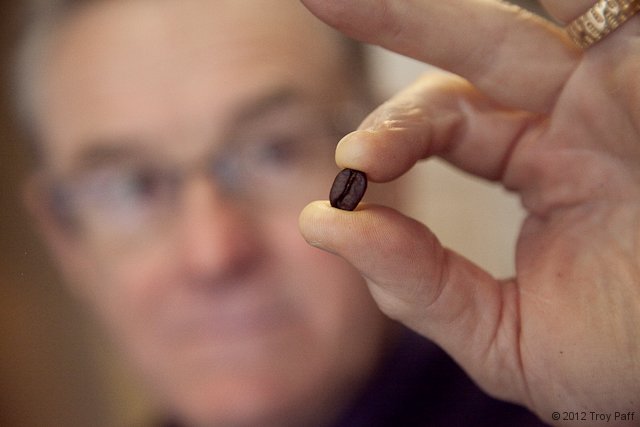

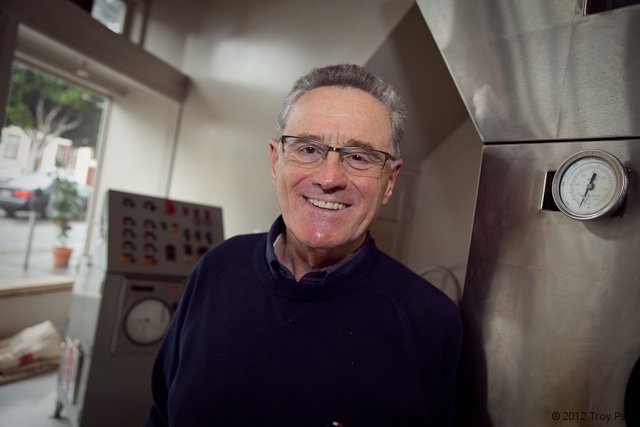

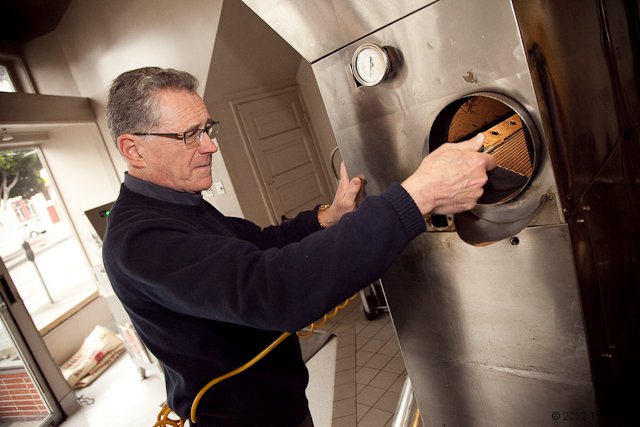



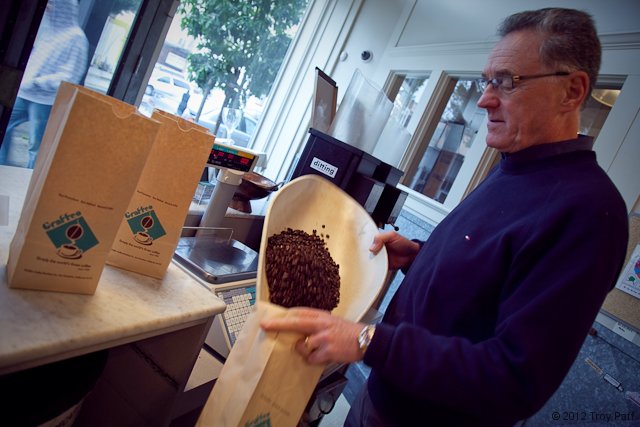

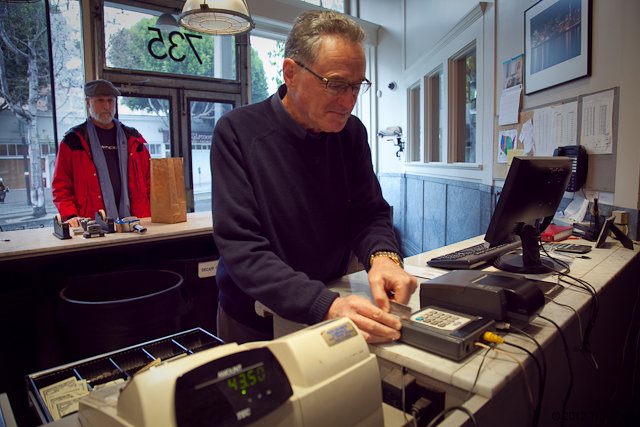

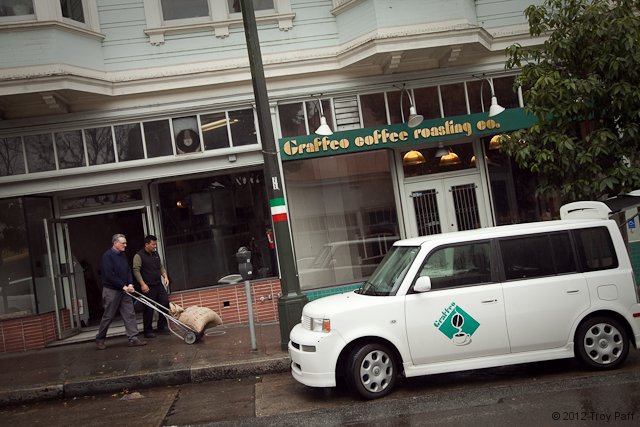

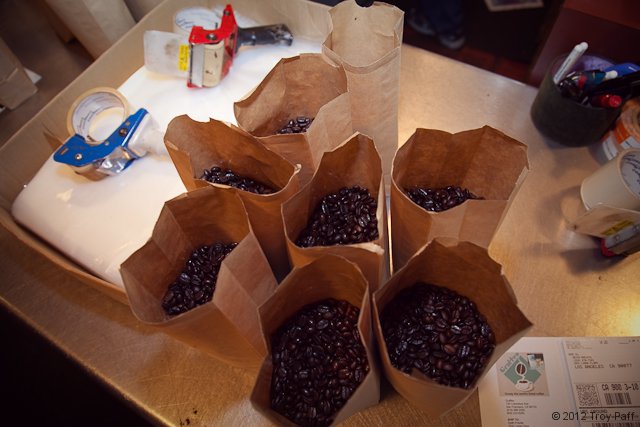

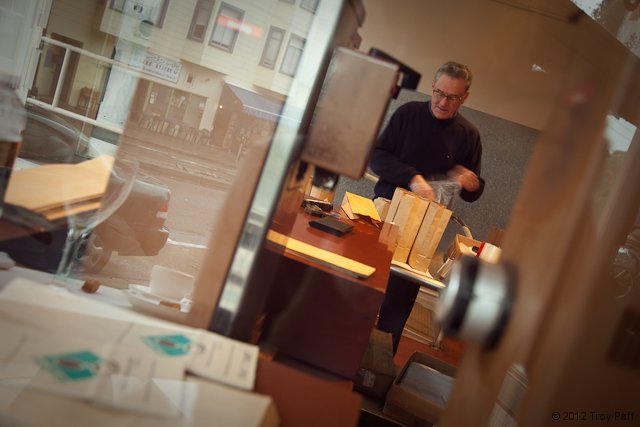

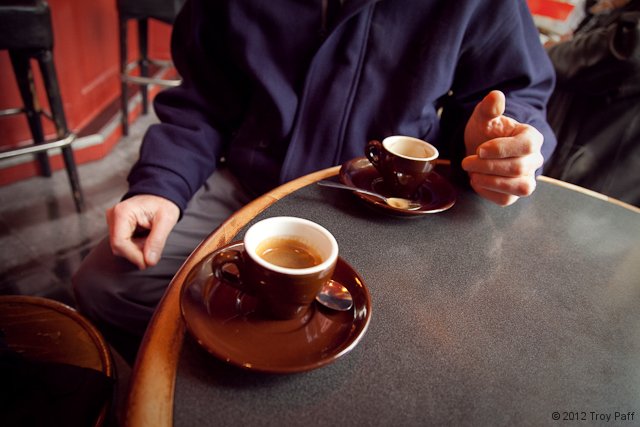

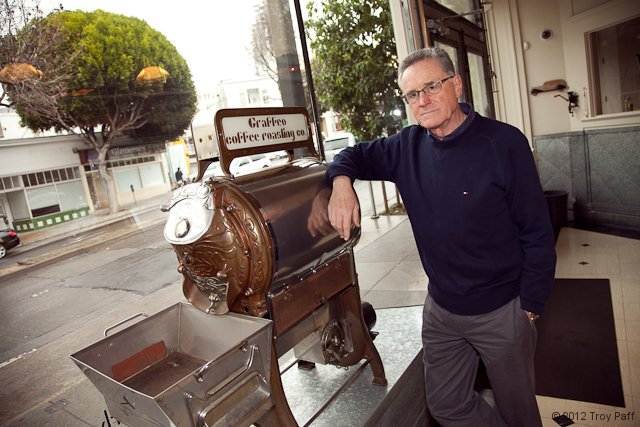

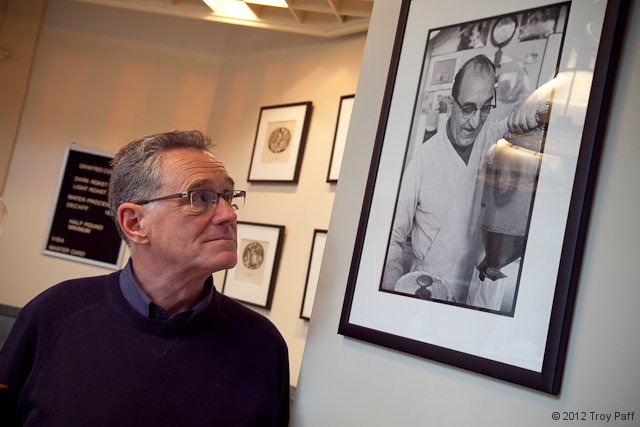

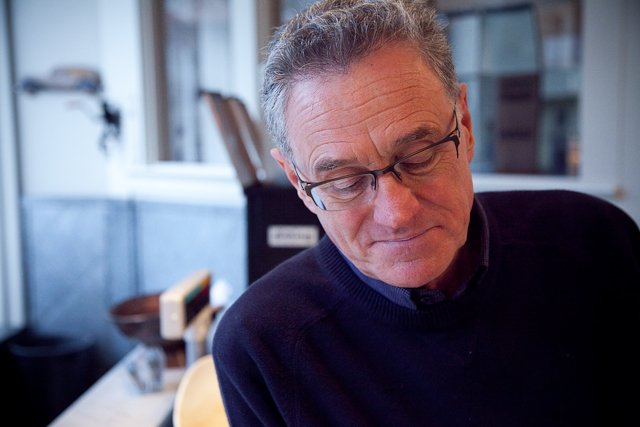

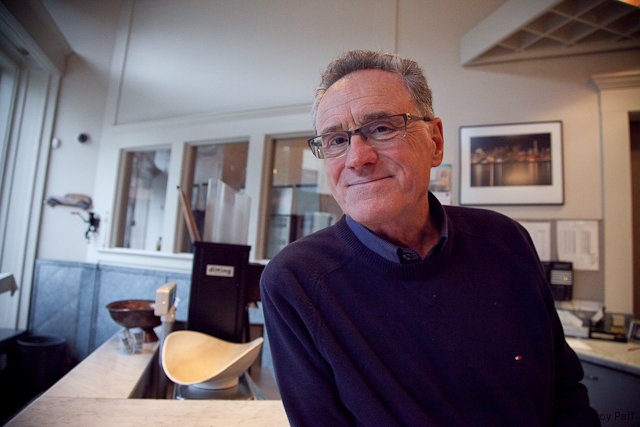

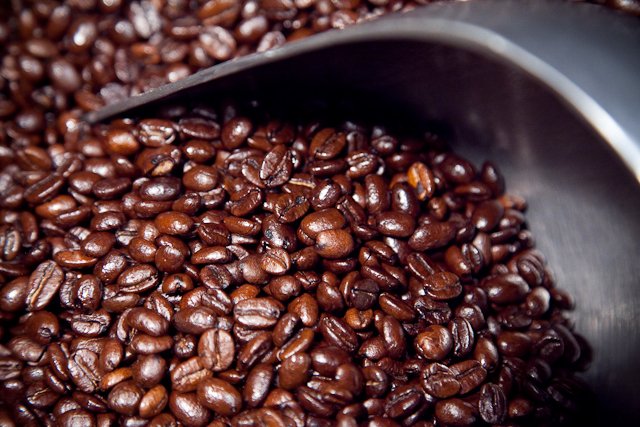

.gif)